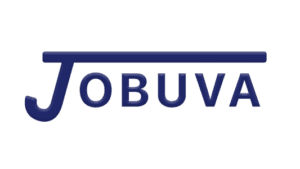Workforce planning is a critical strategic process that ensures an organization has the right people, with the right skills, in the right places, at the right times. As businesses navigate through the complexities of a rapidly changing environment, effective workforce planning has become indispensable. This guide delves into the nuances of workforce planning, offering strategies, best practices, and insights to help organizations future-proof their workforce.
Introduction to Workforce Planning
Definition and Importance
Workforce planning is the systematic process of forecasting an organization’s future workforce needs and determining the most effective way to meet those needs. It encompasses the identification of current and future human resource requirements, the development of strategies to fulfill these requirements, and the continuous monitoring and adjustment of these strategies. This proactive approach ensures that organizations can adapt to changes, remain competitive, and achieve their long-term objectives.
Historical Context and Evolution
The concept of workforce planning has evolved significantly over the years. Traditionally, it was a reactive process focused on filling immediate vacancies. However, with the advent of globalization, technological advancements, and shifting workforce demographics, workforce planning has transformed into a strategic, forward-thinking discipline. Today’s workforce planning integrates advanced analytics, predictive modeling, and a comprehensive understanding of labor market trends to anticipate future needs and align them with organizational goals.
Key Components of Workforce Planning
Workforce Analysis
Workforce analysis involves examining the current workforce to understand its composition, skills, and performance levels. This step provides a baseline from which future workforce needs can be projected. Key metrics analyzed include employee demographics, turnover rates, skill levels, and productivity metrics.
Demand Forecasting
Demand forecasting predicts the number and types of employees an organization will need in the future. This involves analyzing business plans, market trends, and industry developments. Techniques such as trend analysis, scenario planning, and Delphi method are commonly used to forecast demand.
Supply Forecasting
Supply forecasting assesses the current workforce’s capacity to meet future demands. This includes evaluating internal factors like retirement rates, employee turnover, and skill gaps, as well as external factors such as labor market conditions and availability of talent.
Gap Analysis
Gap analysis identifies discrepancies between the current workforce and future needs. It highlights areas where there will be a surplus or shortage of employees and skills. This step is crucial for developing strategies to address these gaps.
Action Planning
Action planning involves creating strategies to bridge the identified gaps. This may include recruitment, training and development, succession planning, and workforce restructuring. The plan should be flexible to adapt to changing circumstances and regularly reviewed to ensure its effectiveness.
Strategic Workforce Planning Process
Aligning Workforce Planning with Organizational Goals
Effective workforce planning starts with a clear understanding of the organization’s strategic goals. This alignment ensures that workforce planning supports the overall business strategy. For instance, if an organization aims to expand into new markets, workforce planning should focus on acquiring the necessary skills and talent to support this expansion.
Stakeholder Engagement
Involving key stakeholders in the workforce planning process is essential. This includes senior management, HR professionals, department heads, and employees. Stakeholder engagement ensures that the workforce plan is comprehensive and considers various perspectives and needs within the organization.
Data Collection and Analysis
Data-driven decision-making is at the heart of effective workforce planning. Collecting and analyzing relevant data, such as employee performance metrics, labor market trends, and demographic information, provides insights into current and future workforce needs. Advanced analytics tools can help in interpreting this data and making informed decisions.
Scenario Planning and Risk Management
Scenario planning involves developing multiple workforce scenarios based on different assumptions and potential future events. This approach helps organizations prepare for various possibilities and develop contingency plans. Risk management strategies are also crucial to mitigate potential workforce-related risks, such as talent shortages or economic downturns.
Tools and Technologies in Workforce Planning
HR Analytics and Big Data
HR analytics leverages big data to provide insights into workforce trends and behaviors. By analyzing large datasets, organizations can identify patterns and make informed predictions about future workforce needs. HR analytics tools can track employee performance, identify skill gaps, and forecast turnover rates.
Workforce Planning Software
Workforce planning software offers comprehensive solutions for managing workforce planning processes. These tools provide functionalities such as demand forecasting, scenario modeling, and succession planning. They also integrate with other HR systems, enabling seamless data flow and improved decision-making.
Predictive Analytics and AI
Predictive analytics and AI are revolutionizing workforce planning. These technologies can analyze vast amounts of data to predict future workforce trends and needs with high accuracy. AI-powered tools can also automate routine tasks, such as scheduling and talent matching, freeing up HR professionals to focus on strategic activities.
Challenges and Solutions in Workforce Planning
Common Pitfalls and How to Avoid Them
Despite its benefits, workforce planning can be challenging. Common pitfalls include:
- Lack of Alignment with Business Goals: Ensuring that workforce planning aligns with organizational goals is crucial. Regular communication with senior management can help maintain this alignment.
- Insufficient Data: Reliable data is essential for accurate forecasting. Investing in robust HR analytics tools and data management systems can mitigate this issue.
- Resistance to Change: Workforce planning often involves organizational change, which can meet resistance. Engaging stakeholders and transparent communication can help manage resistance.
Case Studies of Successful Workforce Planning
Examining successful workforce planning initiatives can provide valuable insights. For instance, a global technology company implemented an advanced HR analytics system to forecast talent needs accurately. This enabled them to develop targeted recruitment and training programs, resulting in a 20% reduction in time-to-hire and a 15% increase in employee retention.
The Future of Workforce Planning
Trends Shaping the Workforce
Several trends are shaping the future workforce, including:
- Remote Work: The rise of remote work is transforming workforce planning. Organizations need to consider how to manage and support a remote workforce effectively.
- Gig Economy: The gig economy is growing, with more people working as freelancers or on short-term contracts. This trend requires flexible workforce planning strategies.
- Diversity and Inclusion: There is an increasing focus on diversity and inclusion. Workforce planning must consider how to attract and retain a diverse workforce.
The Role of AI and Automation
AI and automation are playing an increasingly significant role in workforce planning. AI can analyze data and predict trends more accurately than traditional methods. Automation can streamline routine tasks, such as scheduling and payroll, allowing HR professionals to focus on strategic activities.
Future Skills and Competencies
As the business landscape evolves, so do the skills and competencies required. Future workforce planning must focus on identifying and developing these skills. Critical future skills include digital literacy, data analytics, and soft skills such as adaptability and emotional intelligence.
Conclusion
Workforce planning is a dynamic and strategic process that is essential for organizational success. By understanding its key components, leveraging advanced tools and technologies, and anticipating future trends, organizations can ensure they have the right talent to achieve their goals. Effective workforce planning not only addresses immediate needs but also prepares organizations for future challenges, making it a cornerstone of sustainable business strategy.
References
- Becker, B. E., & Huselid, M. A. (2006). Strategic human resources management: Where do we go from here? Journal of Management, 32(6), 898-925.
- Boudreau, J. W., & Ramstad, P. M. (2007). Beyond HR: The new science of human capital. Harvard Business School Press.
- Cappelli, P. (2008). Talent on demand: Managing talent in an age of uncertainty. Harvard Business Press.
- Davenport, T. H., Harris, J., & Shapiro, J. (2010). Competing on talent analytics. Harvard Business Review, 88(10), 52-58.
- Fitz-enz, J. (2000). The ROI of human capital: Measuring the economic value of employee performance. AMACOM.





